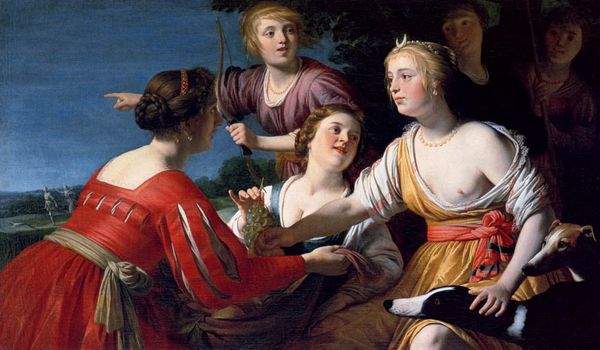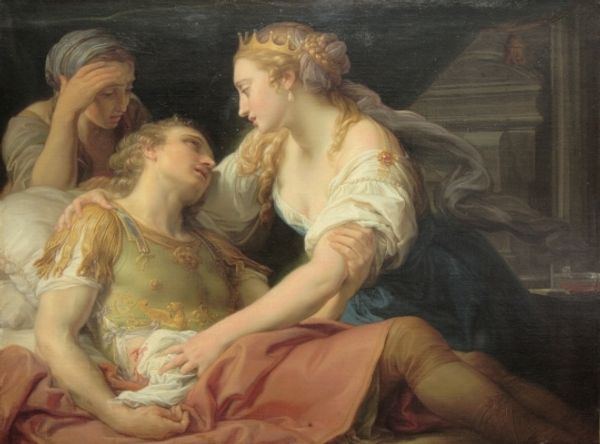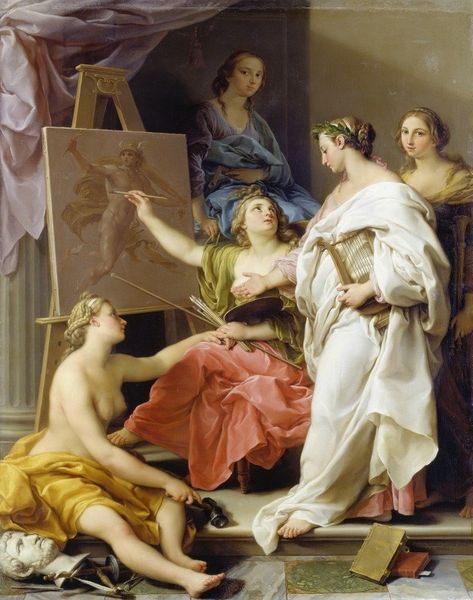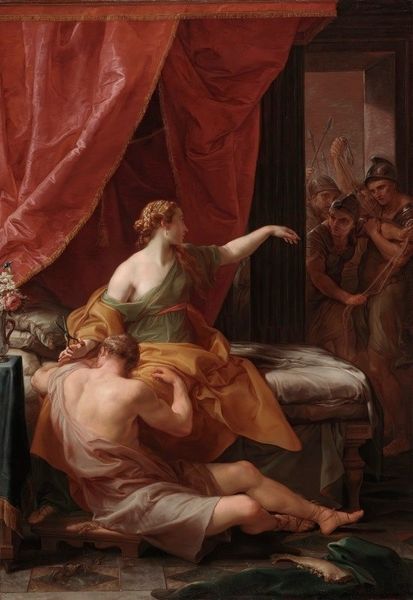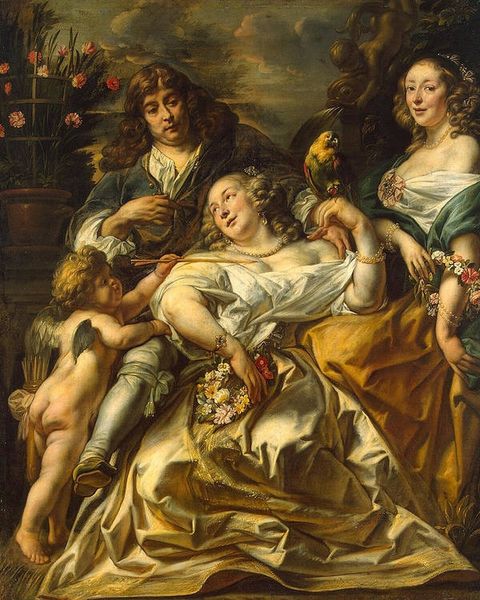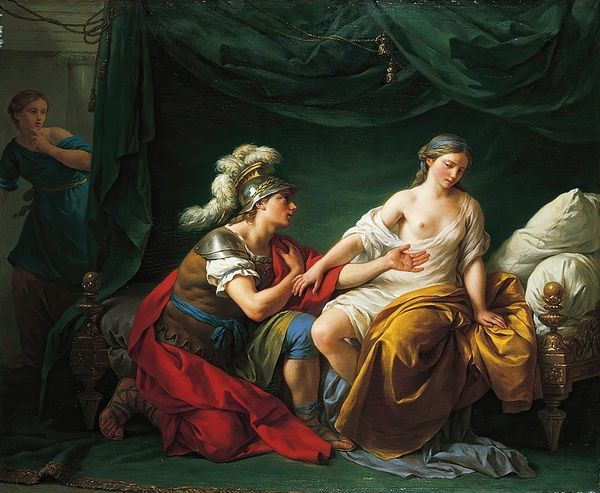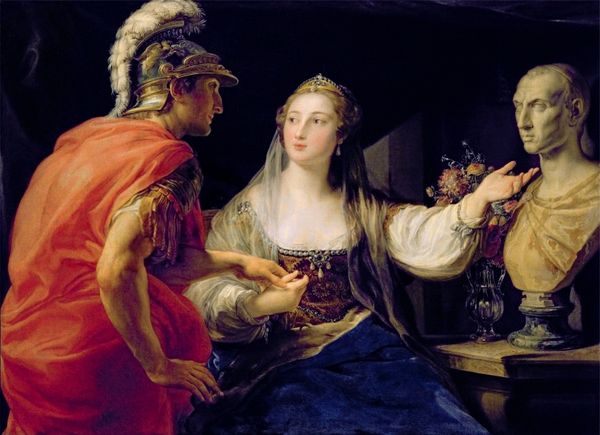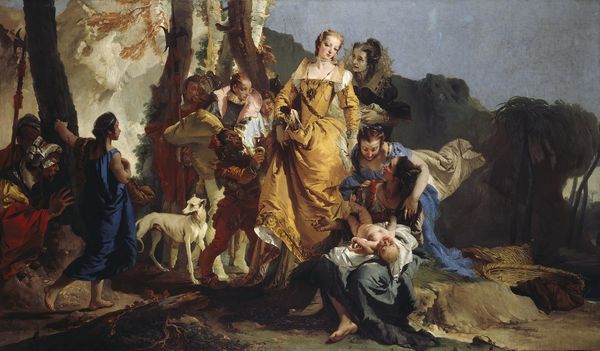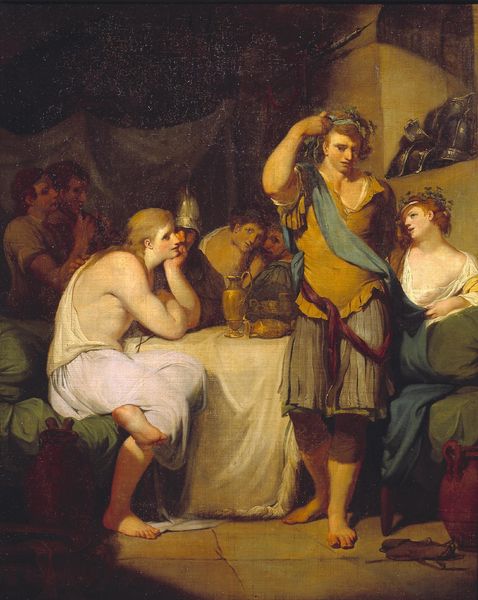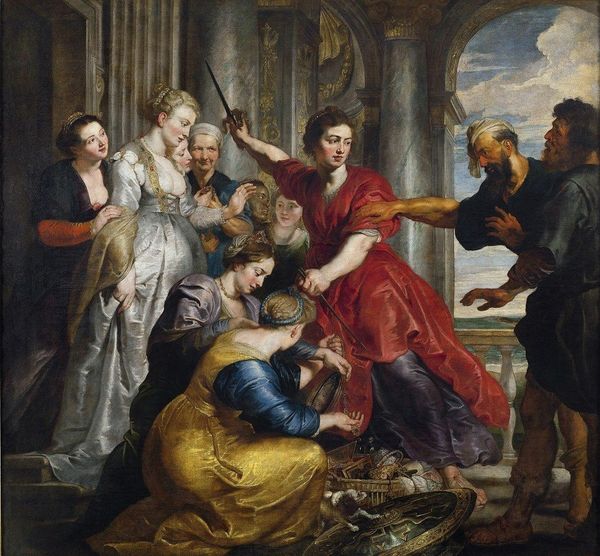
oil-paint
#
portrait
#
gouache
#
allegory
#
baroque
#
oil-paint
#
figuration
#
oil painting
#
mythology
#
history-painting
Copyright: Public Domain: Artvee
Editor: Here we have Giovanni Domenico Tiepolo's "The Women Of Darius Invoking The Clemency Of Alexander," created sometime between 1750 and 1753, using oil paint. It strikes me as quite theatrical, with a real sense of drama in the gestures. What do you see in this piece? Curator: Well, beyond the Baroque theatricality, I see a highly staged encounter reflecting the complex power dynamics of the time. Tiepolo presents Alexander as the embodiment of enlightened European masculinity, offering "clemency". But what does clemency really mean in this context? It suggests forgiveness granted by the powerful to the powerless, obscuring the violence inherent in imperial conquest. Editor: So, the "clemency" itself is a kind of assertion of dominance? Curator: Precisely. Consider the composition: the women of Darius, figures of vulnerability, imploring Alexander. How does Tiepolo’s positioning of Alexander and the women of Darius reinforce prevailing social hierarchies and gender roles within an Orientalist narrative? Think about how it would be displayed, and the audiences for whom this kind of painting would have resonated. Editor: I guess it's not a straightforward celebration of benevolence, but rather a commentary on power, gender, and cultural biases disguised as a historical scene. Is there more to say about Alexander? Curator: Absolutely, his helmet. The helmet isn’t just about battle, it symbolises power but what I see here are plumes and decorations…Alexander appears ready for a pageant. Is the focus military or more likely a diplomatic encounter in which he extends an olive branch. What is also obvious is the almost theatrical element – look at his cape which accentuates his action to the observers. Editor: This is much more layered than I initially thought. Thank you; this really prompts one to question what appears at first glance, and delve into a richer, more nuanced understanding. Curator: Indeed. I'm happy that this has provoked new questions regarding history and culture. Now you’ll be looking into so many new avenues to approach a painting.
Comments
No comments
Be the first to comment and join the conversation on the ultimate creative platform.
